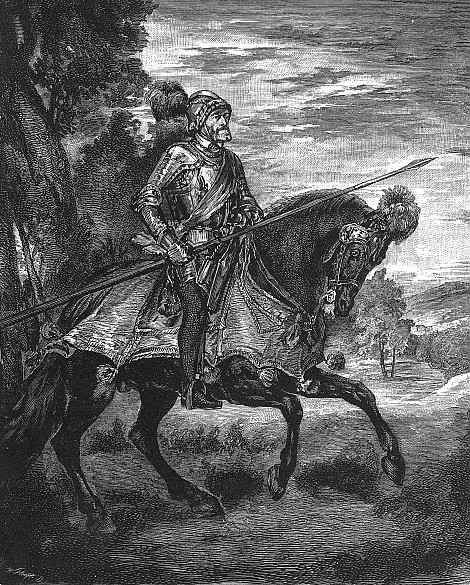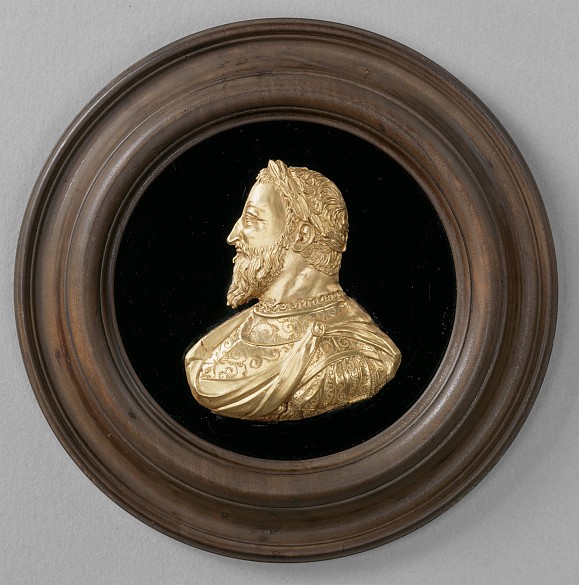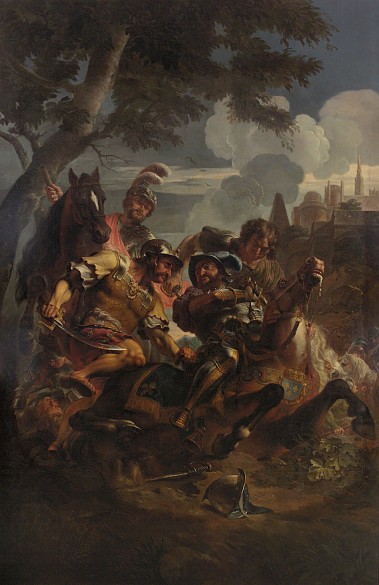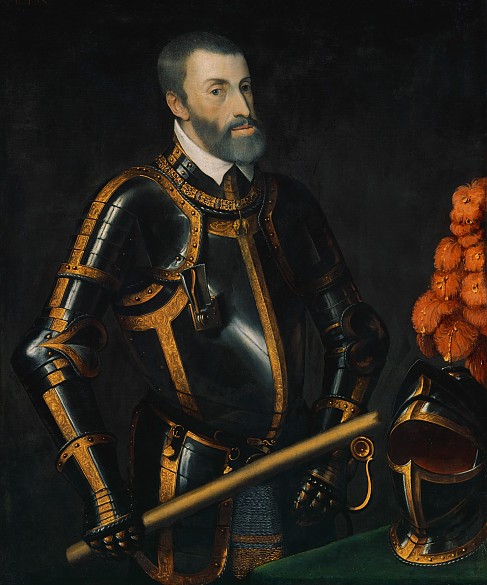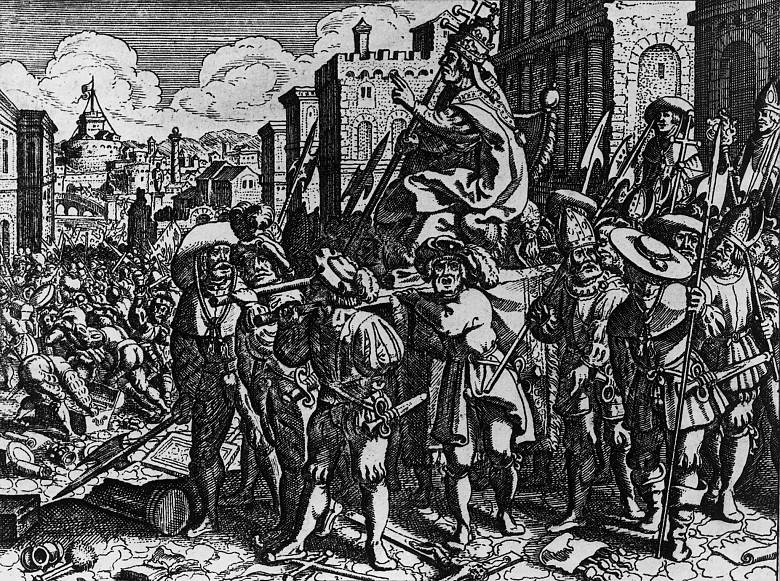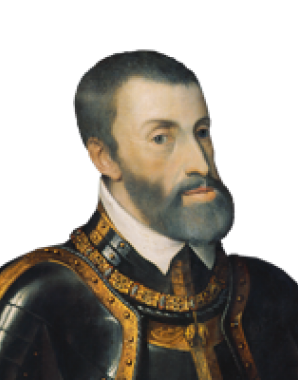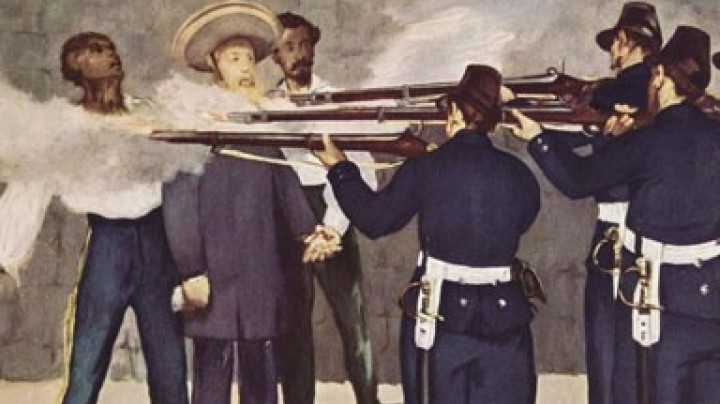‘Blood enmity’ with France: Charles V against Francis I
Habsburg versus France – a bloody conflict between Christian rulers. It began around 1500 and lasted for centuries.
The humanist Erasmus of Rotterdam appeals to the monarchs during the Franco-Habsburg war at the beginning of the 1520sNot even a Turk could be so cruel as to wish the Christians greater misfortune than the suffering they inflict upon each other ... For a Christian prince it is more glorious to give up some piece of territory in order to preserve the state’s peace than to score brilliant and advantageous triumphs that are paid for with the happiness of so many ordinary people.
Report by a Spanish eyewitness of the Sack of Rome in 1527The rich shops of the merchants are horses’ stables; the most splendid palaces have been devastated, many houses burned down, the doors and windows broken down and carried away; the streets have been turned into rubbish heaps, the stench of corpses is frightful. Humans and animals are given the same burial; in the churches I have seen human remains being eaten by dogs.
The imperial election of 1519 was far from a pushover for Charles V. His principal competitor for the office of emperor was the young French king Francis I, who like Charles was intent upon attaining supremacy in Europe. Thanks to financial support from the Fuggers, the election finally went in Charles’s favour. The rivalry between France and the house of Habsburg led to lengthy wars. Charles had his eyes on the duchy of Burgundy and areas in southern France and Italy; Francis I felt uncomfortable with Habsburgs in power on his southern and eastern borders and advanced into the Netherlands and Italy.
In 1525 Charles V won an outstanding victory in the war for hegemony in Italy. Having just taken the city of Milan, which was the object of constant fighting and regularly changed hands, a French army under the personal command of Francis I moved a few kilometres south to lay siege to Pavia. There it was defeated by Charles V’s army of mercenaries, the French king being captured and held prisoner in Milan for almost a year before a treaty was finally concluded: France relinquished Burgundy, the two rulers made plans to make common cause against the Turks, and it was agreed that the peace should be sealed through the marriage of Francis I to Charles’s sister Eleanor.
Once Francis had been set free, however, he was unwilling to recognize a peace that had been forced upon him. Together with Milan, Venice, and Pope Clemens VII he founded the ‘Holy League of Cognac’ in order to counter the excessively powerful position of the Habsburgs in Italy. When in May 1527 the war proved too costly for Charles to pay his mercenaries, they looked elsewhere for remuneration – and stormed Rome, slaughtering thousands of the city’s inhabitants. Although the year 1529 saw the war in Italy concluded with a peace in Charles V’s favour, a number of further wars followed. Not until 1559, under Ferdinand I, was a more lasting peace achieved.
The Habsburgs’ enmity with France, which had already begun under Maximilian I, was for a long time the factor that determined their policy in western Europe. For hundreds of years their ‘blood enmity’ resulted in a perpetual tit-for-tat. Even today, pro-Habsburg historians charge France with having acted wrongly in repeatedly allying themselves with Turks and Protestants.
